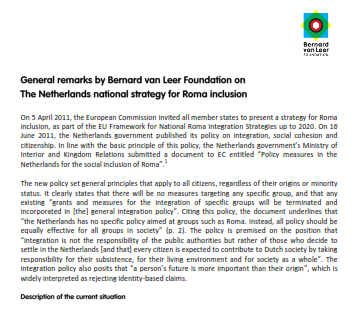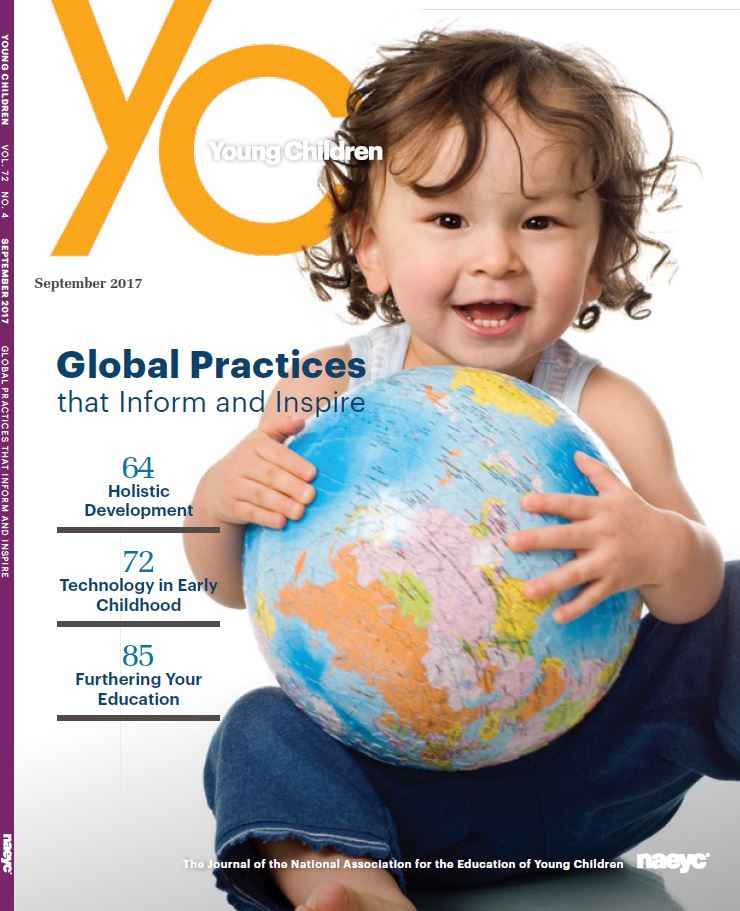Deze blog is alleen beschikbaar in het Engels
On 5 April 2011, the European Commission invited all member states to present a strategy for Roma inclusion, as part of the EU Framework for National Roma Integration Strategies up to 2020. On 16 June 2011, the Netherlands government published its policy on integration, social cohesion and citizenship. In line with the basic principle of this policy, the Netherlands government’s Ministry of Interior and Kingdom Relations submitted a document to EC entitled “Policy measures in the Netherlands for the social inclusion of Roma”.1.
The new policy set general principles that apply to all citizens, regardless of their origins or minority status. It clearly states that there will be no measures targeting any specific group, and that any existing “grants and measures for the integration of specific groups will be terminated and incorporated in [the] general integration policy”. Citing this policy, the document underlines that “the Netherlands has no specific policy aimed at groups such as Roma. Instead, all policy should be equally effective for all groups in society” (p. 2). The policy is premised on the position that “integration is not the responsibility of the public authorities but rather of those who decide to settle in the Netherlands [and that] every citizen is expected to contribute to Dutch society by taking responsibility for their subsistence, for their living environment and for society as a whole”. The integration policy also posits that “a person’s future is more important than their origin”, which is widely interpreted as rejecting identity-based claims.
Description of the current situation
– There is no adequate description of the socio-economic conditions of the Roma community living in Netherlands, nor is there any specific reference to their geographical distribution. Cities and areas where the Roma are concentrated are not named. The reason given is that the Roma are not registered as such in the municipal personal records database.
– The paper asserts that “no more than 0.24% of the Dutch population is of Roma origin”, even if the exact size of the Roma population cannot be ascertained. Whether this leads the Dutch government to accord little attention to the issue is open for debate.
– Effectively, there is no recognition of the need to develop a Roma-specific strategy or action plan. The Netherlands does not recognize the complementarity of inclusion and anti-discrimination. While reference is made to the Central government’s “acknowledgement that there are problems related to the Roma community,” and that those are of an urgent severe nature (p.2), the document immediately goes on to state that the Dutch government believes that its “general policy” on integration is sufficient to address those problems.
– The description of the current situation lists a range of problems that the Roma community faces, without statistical data or substantiation. The list reads like a standard view of stereotypical characteristics associated with the Roma (persistent absence of children from schools, arranged early marriages for Roma girls, parents’ rejection of education), without supporting evidence. The paper fails to present an overview of the education, health, employment and housing status of the Roma population in the Netherlands.
– For its brevity, the Dutch paper chooses to highlight two other subjects beside the priority themes highlighted by the EC: “combating socially unacceptable and criminal behaviour and exploitation of Roma children,” implying that the Netherlands associates those problems
with the Roma community and considers them to be highly significant in the discussion of the social inclusion of Roma. The only basis the paper provides for this is that “municipalities report problems with crime and socially unacceptable behaviour, such as begging, shoplifting, pickpocketing and domestic nuisance”. No further evidence is presented that would allow an informed and contextual assessment of the extent or severity of this “socially unacceptable and criminal behaviour”.
– In contrast, the paper merely quotes the National Roma Platform’s assertion that “members of the Roma community experience discrimination and stigmatisation”. It does not acknowledge this as a problem that the government has a role in addressing, beyond pointing out the existence of mechanisms, at the municipal level as well as in criminal law, to report cases of discrimination and seek assistance. The assumption here seems to be that the Roma people are fully aware of their rights, although the paper does not give any concrete indicators or figures that those mechanisms were actually used by Romani’s.
– There is no disaggregated data by gender (if there is data at all). Also the situation analysis doesn’t provide information about the Romani women in Netherlands and the multiple discriminations they face.
– There is no reference to the Commission’s communication on early childhood education and care, and any benchmarks or milestones to guarantee achieving the goals set by EU 2020 for Roma and non-Roma children.
National Strategy for the integration of Roma
– In line with the philosophy of the new integration policy, the Dutch government appears toshift all responsibility for the problems facing the Roma community in the four priority areas of education, employment, health, and housing, to the Roma themselves. There is no attempt to seriously acknowledge, unpack, or interrogate, the structural and underlying causes of these problems, such as the poverty of the Roma population, and the discrimination and stigmatisation they face. The line taken in the paper is that, within general policy, there are “standard measures in the areas of education, employment, health and housing that benefit vulnerable groups in society, including Roma”.
– Section 4 of the paper (Applying general policy to the four themes) speaks of general policies in those areas, and does not commit to or articulate national goals as defined by the EU framework. The only reference to measures specifically addressing the Roma is when the
paper mentions the budgetary allocation of € 0.6 million that the previous Dutch government made available to the Association of Netherlands Municipalities with the aim of “increasing school attendance among Roma children”. Paradoxically, and against its own logic that rejects special measures for specific minority groups, the paper concludes that those funds succeeded in providing “a basis for effectively combating persistent absence among Roma children”. The paper does not indicate a commitment to continue this special fund or make any other similar budgetary allocations.
Degree of consultaion with civil society (including Roman organizations) and with local authorities
– The paper indicates that “there was contact” with the Dutch Sinti and Roma Institute in the process of preparing the document, as well as with the Roma community, although the exact manner in which this was done is not specified.
– There is no clarity regarding consultations with municipalities, which the paper identifies as having “primary responsibility for dealing with the problems of the local Roma population”. It can be inferred that municipal data was used in the preparation of the paper, but the voice of local authorities does not come through with sufficient force.
– There is no reference to consultations with relevant civil society organisations in Netherlands working on Roma Inclusion.
Cooperation with local and regional authorities and mnicipalities
The paper’s concrete reference to and combined efforts between central government, municipalities, police, and child protection and youth care agencies comes in the context of speaking of combating crime and not Roma integration. The assumption there is that crime is the main issue and by combating it , Roma children’s rights will be protected, including their right to education.
EU Funding
No reference is made to whether available EU funding would be sought and how it would be used.
Conclusion
The absence of concrete data on the size of the Roma population in the Netherlands and on their social and economic conditions makes any talk of a Dutch strategy on Roma integration fictitious. More seriously, the particular integration policy pursued by the current government rejects the very foundations of the EU framework. The Dutch government extends the principles underlying its integration policy to the Roma (“integration is not the responsibility of the government”; “a person’s future is more important than their origin – people need to have the will and the means to integrate into society”) and states that it “has no specific policy aimed at groups, such as the Roma”, and in effect, no intention to develop any such policies.
The Dutch government should be encouraged to: (i) provide specific analysis and data on the Roma population in the Netherlands, particularly in the four priority areas identified by the European Council (ii) conduct a substantive consultation with Roma organisations in the Netherlands and with relevant local authorities and civil society, which would have the aim of preparing a target specific NSRI with concrete milestones.
1 See: http://english.minbzk.nl/subjects/@128068/integration-policy




